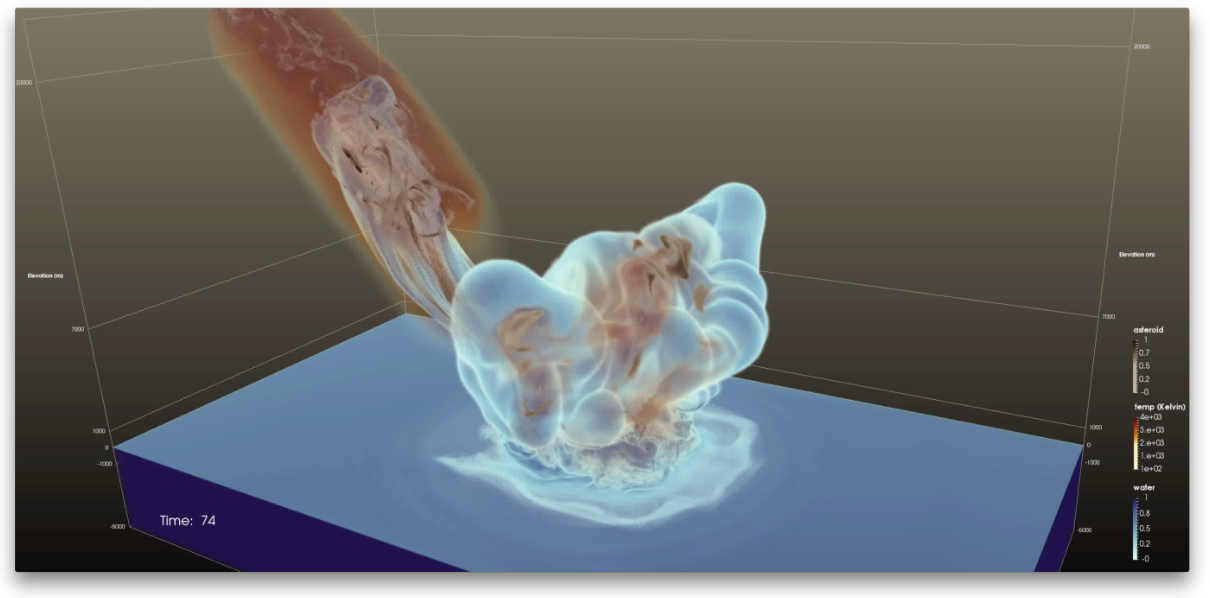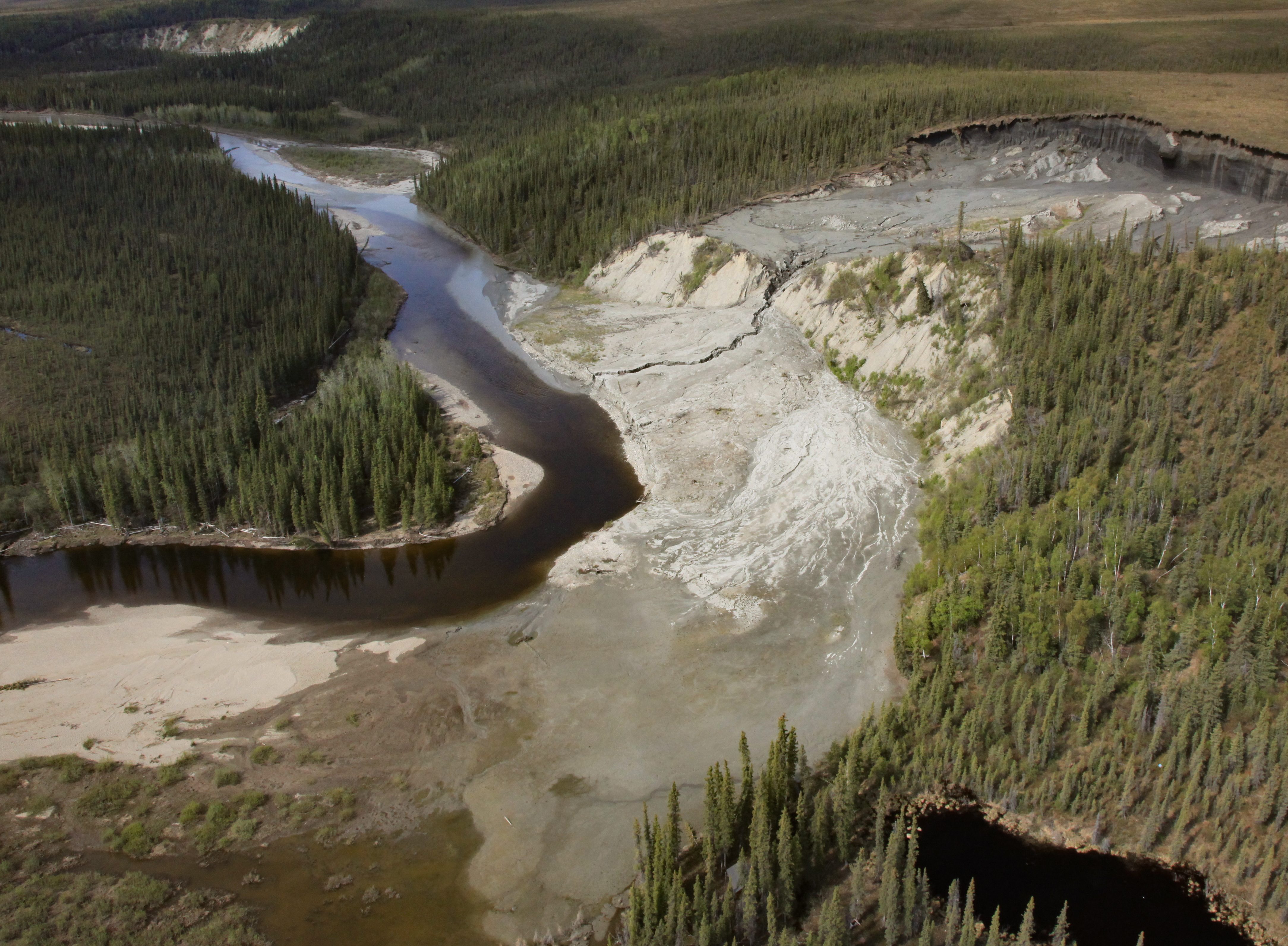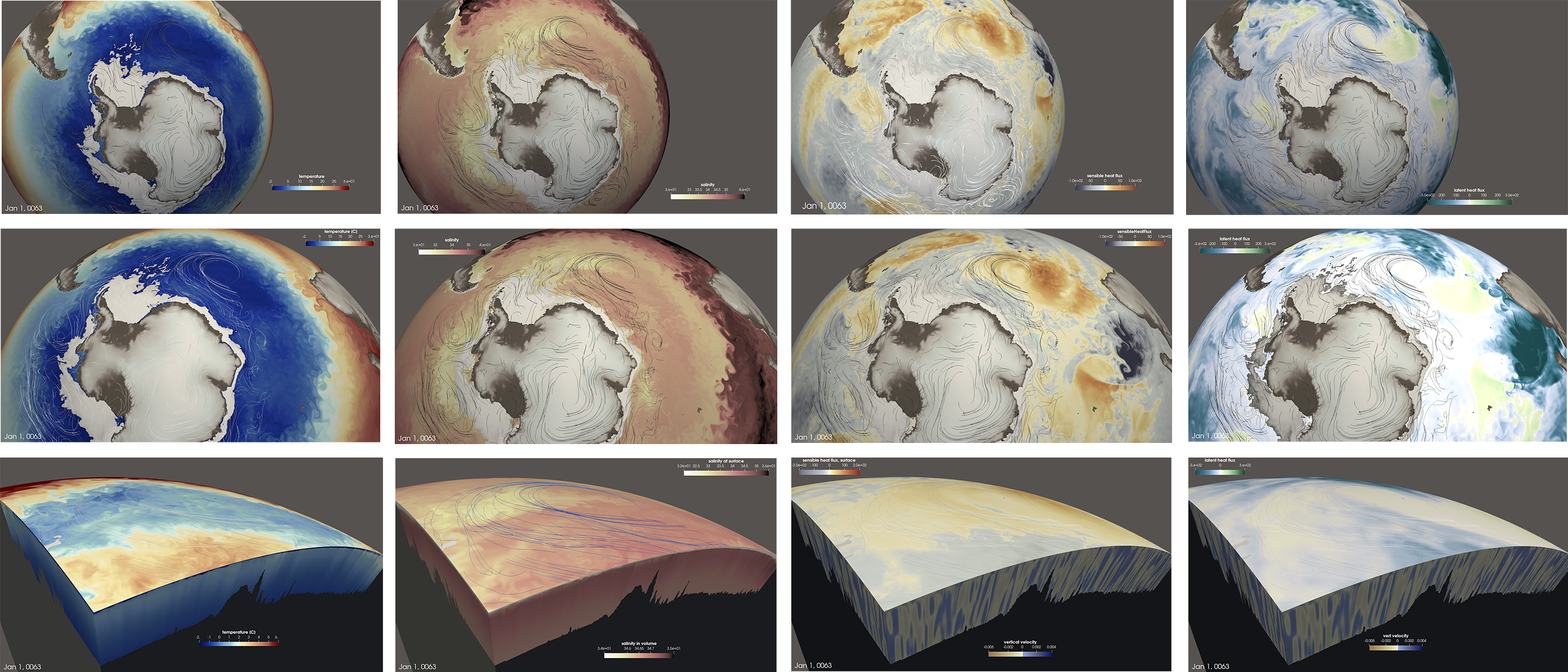Open Data Server
Climate Perspectives
Data Overview:
- E3SM v1 includes ocean, sea ice, and land ice models, all based on the Model for Prediction Across Scales (MPAS) that uses Spherical Centroidal Voronoi Tessellations (SVTs) for multi-resolution modeling, which is important for addressing our v1 cryosphere question focusing on the Antarctic Ice Sheet.
Cinema Database Link:
Vorticity-Driven Lateral Spread Ensemble Data Set
FireTec
Data Overview:
- Wildfire behavior is a result of complex nonlinear interactions between a variety of physical processes and chemical reactions. Understanding the coupling between these components and the ways in which their interactions are influenced by their surrounding environment (e.g. winds, fuels, and topography) is a challenging undertaking. The IEEE SciVis 2022 Contest is focused on the visualization and analysis of simulations of wildfires.
Database Link:
Deep Water Astroid Impact

Data Overview:
-
Asteroids of various sizes, speeds, and compositions are zipping around the solar system with potential future Earth engagements. Most of the earth is covered in ocean and impacts would likely occur in deep ocean water. The IEEE SciVis Contest 2018 is dedicated to the visualization and analysis of simulations designed to study asteroid impacts in deep ocean water.
Database Link:
Antartic Polynya Formation
Data Overview:
Polynyas are openings in the sea ice that strongly influence air-sea exchanges. More specifically, polynyas are openings within polar sea ice pack formed and sustained by atmospheric and oceanic processes. They occur in the Arctic ocean and the Southern ocean, lasting for many months, and act as a conduit for heat and water between the oceanic and atmospheric systems. This data was created using high-resolution simulations from the Energy Exascale Earth Systems Model (E3SM).
The detailed overlay of variables, dense in time and space, provided climate scientists with new insights into their research — especially in regards to the dynamics of convective plumes driven by cold melt water near open ocean polynyas, and the katabatic winds that create coastal polynyas at the edge of Antarctica.







